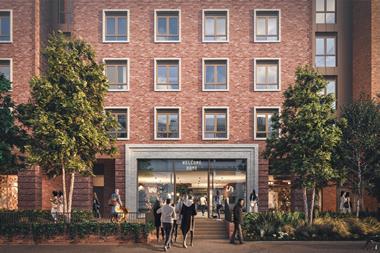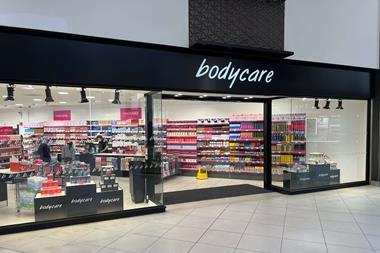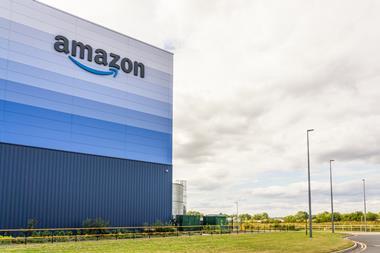The Southwest’s most prominent city is well known for many things – its merchant history, its thriving music scene, its regency architecture, its academia. It is not, however, famous for its shopping. This is despite the wealth of the city’s catchment, its dominance of the region and the 9 million or so tourists that flock there each year.
But this is all set to change after the opening last week of the much-anticipated Cabot Circus shopping centre. The 1.5 million sq ft (139,350 sq m) development by Hammerson and Land Securities, which have formed The Bristol Alliance, is one of the most significant mixed-use schemes of the decade, bringing a huge wave of new shops to the city and with them, new retailers. Robert Young, development director of fashion retailer Cruise, says: “It amazes me that this hasn’t been done before. Bristol’s a fabulous city and there’s great catchment.” John Hirst, the manager of the neighbouring Broadmead centre, agrees. “Bristol should have had Cabot Circus 10 years ago, but never mind – it’s here now,” he says.
The development partnership is confident that Cabot Circus will see Bristol climb its way up the UK shopping centre rankings into a top 10 spot. But has it done enough to turn Bristol into a top-flight retail city?
Local residents no doubt share Hirst’s view. There is a 3.6 million catchment within an hour’s drive of the city and the well-heeled, affluent population of the UK’s eighth-largest city is ready to shop. 35,000 people flocked to the centre in the hour following its opening. It may have launched in testing times, but with the highest number of ABC1s outside London and the fastest-growing gross domestic product in the country, Cabot Circus certainly has potential.
The centre is in a run-down area of the city – or as some refer to it, “the pits”. The transformation is impressive. What stands there now is one of the most modern centres in the country. Land Securities chief executive Francis Salway adds: “One of the things we’re delighted about is that this is not just reshuffling the cards. Despite these very difficult financial times, the project is about 90 per cent let. It’s a reflection of what good regeneration brings.”
The scheme also backs onto the city’s first real shopping centre from the post-war reconstruction era – Broadmead, which is also owned by The Bristol Alliance. Arguably, Cabot Circus is an extension of Broadmead, but it is pitching to a different customer altogether. Broadmead’s position has been stable since its opening, but its potential stifled. The construction of a major ring road around it has strangled any sizeable growth or evolution of the centre, despite efforts to update it.
As Chapman Taylor director Adrian Griffiths says: “For years, Broadmead has been hampered by the alignment of existing streets,” he says. “It couldn’t expand because of the poor planning of the 1940s.”
What the Bristol Alliance has done for the city is impressive. Apart from the fact it has built 115 stores for Cabot Circus in the city’s centre, perhaps even more significant is that 75 of them have been let to retailers that are new to the city.
Tried and trusted names
The draw of House of Fraser and Harvey Nichols at Cabot Circus is undeniable. The popularity of the latter on opening day indicates the level of local demand for a new retail offer – queues formed outside for most of the day. Like Harvey Nichols’ other regional store, it is a slimmed-down version of its Knightsbridge flagship – it is only 37,000 sq ft (3,435 sq m), compared with House of Fraser’s 170,000 sq ft shop (15,795 sq m) – but it was certainly fulfilling the expectations of an anchor store.
These two stores have been pitched perfectly for the target catchment of the scheme. True to the demographic, most of the shoppers were ABC1 and the tenant mix that has followed House of Fraser and Harvey Nichols to the centre also reflects Bristol’s aspirational, wealthy population. Other tenants include Zara, Jane Norman, Republic, All Saints, Hugo Boss, Reiss, Ted Baker, Cruise and Kurt Geiger.
Given the city’s abundance of affluent, young shoppers because of its student population, it is odd that such brands are only just making their debut there. As Young says: “It’s absolutely right for us. We wanted to move south and Bristol was the perfect city. It was ready for some great retail. I think Cabot Circus will be so well accepted. It’s unusual and dynamic.”
Leasing Cabot Circus has been a much smoother process than it has at other centres that have opened this year. To open with 100 out of 115 stores trading is a real achievement in today’s climate. This strong result is down to The Bristol Alliance’s early start on the lettings process and the momentum it managed to build up.
Hammerson assistant director of retail leasing Sarah Mander says: “We’re very fortunate. Bristol started off from a very basic retail level, but with a great catchment. They knew Cabot Circus was coming and they waited for it. Because of the catchment we’ve got, there was good demand from retailers that haven’t been in Bristol before.”
Not all the centre’s retailers were trading last week. But the absence of shops such as Crew Clothing and Optical Express was inconspicuous enough to the untrained eye. Overall, it has been a good lettings story, with the new retailers on board being an additional highlight.
When you consider the long list of high street retailers that have been absent in Bristol up until now, the city’s poor showings in retail rankings start to make sense. But why these household names have been missing for so many years is less easy to understand. The answer is simply that, until now, there hasn’t been a scheme attractive enough to woo them.
Cabot Circus is one of a new generation of centres that satisfy retailers’ demands. Architecturally, the structure is modern through and through. A combination of open streets and a semi-covered busy public square with House of Fraser at the centre, it is a major improvement on the box designs of the 1970s and 1980s. With seven different architects working on the scheme under the guidance of masterplan architect Chapman Taylor, it also benefits from a variety of patterns and facades that blend with the surrounding city.
And herein lies one of the project’s main aims: continuity with the city centre. Hammerson and Land Securities have taken a responsible attitude with Cabot Circus. Its role goes beyond the creation of retail space. Like Liverpool One and Highcross Leicester, the centre is an urban extension to the city in keeping with the Government’s drive to put town centres first and regenerate underused land.
Physically, it isn’t glaringly obvious where the scheme begins and ends. It’s not designed to be an exclusive retail trap; its aim is to drive footfall throughout the city, not hoard it. But there are the odd fault lines where there are inevitably going to be casualties.
Opposite the Penn Street entrance is a distinctly lower grade of shops that The Bristol Alliance owns and has lined up for redevelopment. This is perhaps just as well, because the stores there at present are all of a sudden in the shade. In one section of a street, the running order is: Hugo Boss, Ollie & Nic, a job centre and an empty store. And further along the same street, a string of independent fashion, handbags and accessories retailers were largely empty on opening day, save for a few bored-looking shop assistants watching the scores of shoppers streaming past into the gleaming new centre.
After the ever so slightly chaotic – yet heaving – opening ceremony had finished, the general mood was distinctly enthusiastic, with Bristolians apparently having taken to the new arrival already. By mid-afternoon, plenty of people were relaxing in the mild weather, lounging in the various seating areas and draping themselves over the balconies looking genuinely impressed with the new scenery.
In fact, it is difficult to find fault with a centre that does so much for a city. Bristol may have occupied a lowly spot in UK shopping rankings before, but from here it can only get higher on that list. Why Bristol didn’t have Cabot Circus 10 years ago is a wonder, but thankfully for the people of the Southwest, it is here now.
How the west was won
- The 1.5 million sq ft (139,350 sq m) centre is home to 115 retail stores and 25 eateries, and has attracted 75 new retailers to Bristol
- It has two anchors: House of Fraser and Harvey Nichols
- The scheme includes a 150-bedroom hotel, offices, both upmarket and affordable housing – including student housing – and a car park
- The centre has created 4,000 permanent jobs in Bristol
- It is the first retail-led scheme in the country to receive an “Excellent” rating by the Building Research Establishment Environmental Assessment Method (BREEAM) for sustainability. 75 per cent of the materials used have been sourced in the UK and the site includes a rainwater harvesting system
- Bristol City Council conceived the idea to build a new centre in 1998


























No comments yet